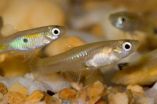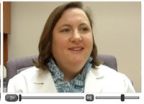(Press-News.org) PITTSBURGH—An analysis of plant and petroleum-derived plastics by University of Pittsburgh researchers suggests that biopolymers are not necessarily better for the environment than their petroleum-based relatives, according to a report in Environmental Science & Technology. The Pitt team found that while biopolymers are the more eco-friendly material, traditional plastics can be less environmentally taxing to produce.
Biopolymers trumped the other plastics for biodegradability, low toxicity, and use of renewable resources. Nonetheless, the farming and chemical processing needed to produce them can devour energy and dump fertilizers and pesticides into the environment, wrote lead author Michaelangelo Tabone (ENG, A&S '10), who conducted the analysis as an undergraduate student in the lab of Amy Landis, a professor of civil and environmental engineering in Pitt's Swanson School of Engineering. Tabone and Landis worked with James Cregg, an undergraduate chemistry student in Pitt's School of Arts and Sciences; and Eric Beckman, codirector of Pitt's Mascaro Center for Sustainable Innovation and the George M. Bevier Professor of Chemical and Petroleum Engineering in Pitt's Swanson School. The project was supported by the National Science Foundation.
The researchers examined 12 plastics—seven petroleum-based polymers, four biopolymers, and one hybrid. The team first performed a life-cycle assessment (LCA) on each polymer's preproduction stage to gauge the environmental and health effects of the energy, raw materials, and chemicals used to create one ounce of plastic pellets. They then checked each plastic in its finished form against principles of green design, including biodegradability, energy efficiency, wastefulness, and toxicity.
Biopolymers were among the more prolific polluters on the path to production, the LCA revealed. The team attributed this to agricultural fertilizers and pesticides, extensive land use for farming, and the intense chemical processing needed to convert plants into plastic. All four biopolymers were the largest contributors to ozone depletion. The two tested forms of sugar-derived polymer—standard polylactic acid (PLA-G) and the type manufactured by Minnesota-based NatureWorks (PLA-NW), the most common sugar-based plastic in the United States—exhibited the maximum contribution to eutrophication, which occurs when overfertilized bodies of water can no longer support life. One type of the corn-based polyhydroyalkanoate, PHA-G, topped the acidification category. In addition, biopolymers exceeded most of the petroleum-based polymers for ecotoxicity and carcinogen emissions.
Once in use, however, biopolymers bested traditional polymers for ecofriendliness. For example, the sugar-based plastic from NatureWorks jumped from the sixth position under the LCA to become the material most in keeping with the standards of green design. On the other hand, the ubiquitous plastic polypropylene (PP)—widely used in packaging—was the cleanest polymer to produce, but sank to ninth place as a sustainable material.
Interestingly, the researchers found that the petroleum-plant hybrid biopolyethylene terephthalate, or B-PET, combines the ills of agriculture with the structural stubbornness of standard plastic to be harmful to produce (12th) and use (8th).
Landis is continuing the project by subjecting the polymers to a full LCA, which will also examine the materials' environmental impact throughout their use and eventual disposal.
INFORMATION:
Pitt researchers: Plant-based plastics not necessarily greener than oil-based relatives
Biopolymers are the more eco-friendly material, but farming and energy-intense chemical processing means they are dirtier to produce than petroleum-derived plastics, according to study in Environmental Science & Technology
2010-10-22
ELSE PRESS RELEASES FROM THIS DATE:
Smaller is better in the viscous zone
2010-10-22
DURHAM, N.C. -- Being the right size and existing in the limbo between a solid and a liquid state appear to be the secrets to improving the efficiency of chemical catalysts that can create better nanoparticles or more efficient energy sources.
When matter is in this transitional state, a catalyst can achieve its utmost potential with the right combination of catalyst particle size and temperature, according to a pair of Duke University researchers. A catalyst is an agent or chemical that facilitates a chemical reaction. It is estimated that more than 90 percent of chemical ...
Carnegie Mellon researchers break speed barrier in solving important class of linear systems
2010-10-22
PITTSBURGH—Computer scientists at Carnegie Mellon University have devised an innovative and elegantly concise algorithm that can efficiently solve systems of linear equations that are critical to such important computer applications as image processing, logistics and scheduling problems, and recommendation systems.
The theoretical breakthrough by Professor Gary Miller, Systems Scientist Ioannis Koutis and Ph.D. student Richard Peng, all of Carnegie Mellon's Computer Science Department, has enormous practical potential. Linear systems are widely used to model real-world ...
Light on silicon better than copper?
2010-10-22
DURHAM, N.C. -- Step aside copper and make way for a better carrier of information -- light.
As good as the metal has been in zipping information from one circuit to another on silicon inside computers and other electronic devices, optical signals can carry much more, according to Duke University electrical engineers. So the engineers have designed and demonstrated microscopically small lasers integrated with thin film-light guides on silicon that could replace the copper in a host of electronic products.
The structures on silicon not only contain tiny light-emitting ...
Too many sisters affect male sexuality
2010-10-22
Growing up with lots of sisters makes a man less sexy. For rats, anyway. A new study published in Psychological Science, a journal of the Association for Psychological Science, finds that the sex ratio of a male rat's family when he's growing up influences both his own sexual behavior and how female rats respond to him.
David Crews, a psychobiologist at the University of Texas at Austin, is interested in how early life affects behavior later. This is an area that has received a lot of attention recently, such as research showing that the position of a fetus in the uterus ...
Strategies for translational research in the UK
2010-10-22
A commentary published in the journal, Science Translational Medicine, examines the structures of translational research investment in the UK.
The commentary has been written by researchers from the National Institute for Health Research (NIHR) comprehensive Biomedical Research Centre (BRC) at Guy's and St Thomas' and King's College London. The authors consider the results of substantial Government and charitable investment in translational research taking place within the NHS.
The commentary follows the progress of the research and development funding streams available ...
Poor start in life need not spell doom in adulthood
2010-10-22
RIVERSIDE, Calif. – Does the environment encountered early in life have permanent and predictable long-term effects in adulthood? Such effects have been reported in numerous organisms, including humans.
But now a biology graduate student at the University of California, Riverside reports that how individuals fare as adults is not simply a passive consequence of the limits that early conditions may impose on them. Studying how adult Trinidadian guppies (small freshwater fish) responded to their early food conditions, Sonya Auer found that the guppies had compensated ...
Researchers find better method to help mothers cope with child's cancer and related stress
2010-10-22
VIDEO:
Martha Askins explains problem-solving skills training.
Click here for more information.
BOSTON - Mothers who have children diagnosed with cancer now have a better approach to address and cope with stresses associated with their child's disease.
A new certified intervention has proven to be more effective long term compared to other psychological methods, as reported today at the 42nd Congress of the International Society of Pediatric Oncology.
In a joint ...
Study finds airbags reduce risk of kidney injury in car crashes
2010-10-22
CHICAGO (October 21, 2010) – Occupants in motor vehicles with airbags are much less likely to suffer kidney or renal damage in a crash than are occupants in vehicles without airbags, according to a new study in the September Journal of the American College of Surgeons.
Little is known about how to prevent or reduce injury to solid organs from motor vehicle collisions. In fact, this study is the first to evaluate the protective effect of airbags on a specific organ system – in this case, the kidney and other renal, or upper urinary tract, organs.
The researchers found ...
Telementoring may address need for surgical subspecialty expertise in remote locations
2010-10-22
CHICAGO (October 21, 2010) – Telementoring may be an effective way for subspecialist surgeons to assist remotely located general surgeons in the care of patients in need of emergency subspecialty surgical procedures, according to new research findings published in the September issue of the Journal of the American College of Surgeons.
In the study, eight general surgery residents with no formal subspecialty training participated in three mock operations using animal cadavers intended to simulate live procedures. When telementored, the residents achieved higher overall ...
Studies show everolimus-eluting stent implantation reduces restenosis and repeat revasculariztion
2010-10-22
Two new studies have determined that everolimus-eluting stent (EES) implantation reduced the incidence of restenosis and repeat revascularization in patients with calcified culprit lesions, and had fewer clinical events. Results show the rate of major cardiac adverse events in EES-treated patients with calcified lesions were higher than in those for noncalcified lesions, but remained lower than the results of previously reported stent studies. Details of both studies are published in the November issue of Catheterization and Cardiovascular Intervention, a peer-reviewed ...
LAST 30 PRESS RELEASES:
Injectable breast ‘implant’ offers alternative to traditional surgeries
Neuroscientists devise formulas to measure multilingualism
New prostate cancer trial seeks to reduce toxicity without sacrificing efficacy
Geometry shapes life
A CRISPR screen reveals many previously unrecognized genes required for brain development and a new neurodevelopmental disorder
Hot flush treatment has anti-breast cancer activity, study finds
Securing AI systems against growing cybersecurity threats
Longest observation of an active solar region
Why nail-biting, procrastination and other self-sabotaging behaviors are rooted in survival instincts
Regional variations in mechanical properties of porcine leptomeninges
Artificial empathy in therapy and healthcare: advancements in interpersonal interaction technologies
Why some brains switch gears more efficiently than others
UVA’s Jundong Li wins ICDM’S 2025 Tao Li Award for data mining, machine learning
UVA’s low-power, high-performance computer power player Mircea Stan earns National Academy of Inventors fellowship
Not playing by the rules: USU researcher explores filamentous algae dynamics in rivers
Do our body clocks influence our risk of dementia?
Anthropologists offer new evidence of bipedalism in long-debated fossil discovery
Safer receipt paper from wood
Dosage-sensitive genes suggest no whole-genome duplications in ancestral angiosperm
First ancient human herpesvirus genomes document their deep history with humans
Why Some Bacteria Survive Antibiotics and How to Stop Them - New study reveals that bacteria can survive antibiotic treatment through two fundamentally different “shutdown modes”
UCLA study links scar healing to dangerous placenta condition
CHANGE-seq-BE finds off-target changes in the genome from base editors
The Journal of Nuclear Medicine Ahead-of-Print Tip Sheet: January 2, 2026
Delayed or absent first dose of measles, mumps, and rubella vaccination
Trends in US preterm birth rates by household income and race and ethnicity
Study identifies potential biomarker linked to progression and brain inflammation in multiple sclerosis
Many mothers in Norway do not show up for postnatal check-ups
Researchers want to find out why quick clay is so unstable
Superradiant spins show teamwork at the quantum scale
[Press-News.org] Pitt researchers: Plant-based plastics not necessarily greener than oil-based relativesBiopolymers are the more eco-friendly material, but farming and energy-intense chemical processing means they are dirtier to produce than petroleum-derived plastics, according to study in Environmental Science & Technology



